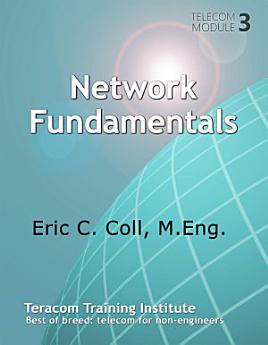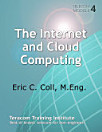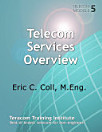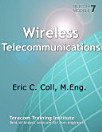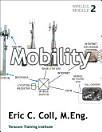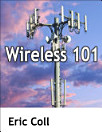Network Fundamentals
Om den här e-boken
In this module, we’ll ensure you have a solid foundation in the fundamentals and jargon of the modern telecom network.
Today’s converged telecom network is based on what used to be called 'data communications': packets of data carried in frames on physical connections between devices. Accordingly, it is necessary to understand the fundamentals of data communications to understand today's telecom network.
Without bogging down on details, we’ll review basic circuit types, and what is necessary to communicate between devices: frames and network addresses, and how this is implemented with Ethernet MAC frames and IP network addresses.
Then we’ll understand how TCP is used for reliable file transfers, how UDP is used for best-efforts streaming, and the purpose of port numbers that both implement.
Finally we’ll see how the network core adds an MPLS label to the packet, as a mechanism for traffic management and if necessary, prioritization on the network.
Telecom Module 3
Detailed Outline
3 Network Fundamentals
3.1 Essential Functions for Communication
..... 3.1.1 Bits and Bytes
..... 3.1.2 Coding
..... 3.1.3 Error Control
..... 3.1.4 Framing
..... 3.1.5 Link Addressing
..... 3.1.6 Network Addressing
3.2 Shared Multidrop Links: Wi-Fi, PONs, CATV, CAN-BUS
..... 3.2.1 Primary Station and Secondary Stations
..... 3.2.2 Wi-Fi
..... 3.2.3 PON
..... 3.2.4 Cable TV
..... 3.2.5 Industrial Controls: CAN-BUS
..... 3.2.6 Legacy IBM Mainframes
3.3 Point-to-Point Links: Ethernet
..... 3.3.1 Ethernet LANs and Balanced Mode
..... 3.3.2 Transition to Point-to-Point and Switches
..... 3.3.3 802 Standards
..... 3.3.4 Buses, NICs, Interfaces and MAC Addresses
..... 3.3.5 Ethernet LAN Switches
..... 3.3.6 Broadcast Domains and MAC Addresses
3.4 Data Link Frames & MAC Addresses
..... 3.4.1 MAC Frames
..... 3.4.2 Transmission Between Devices on the Same Circuit
..... 3.4.3 Legacy Systems and Terminology
3.5 Packet Networks
..... 3.5.1 Routers and Network Addresses
..... 3.5.2 Packets
..... 3.5.3 Network Connections
..... 3.5.4 Traffic Management
3.6 Carrier IP Networks
..... 3.6.1 Routers and Routing
..... 3.6.2 IP Packets
..... 3.6.3 Network Routers and Customer Edge Router
..... 3.6.4 End-to-End Packet Relay and Routing
3.7 IP Packets vsMAC Frames
..... 3.7.1 Purpose of Frames
..... 3.7.2 Purpose of Packets
..... 3.7.3 Packets Carried in Frames
..... 3.7.4 MAC Address vsIP Address
3.8 IP Packet Format
..... 3.8.1 Packet Header
3.9 TCP, UDP, Ports and Sockets
..... 3.9.1 Unreliable, Connectionless IP Network
..... 3.9.2 Reliable Communications over an Unreliable Network
..... 3.9.3 Port Number Identifies Application at the IP Address
3.10 MPLS Labels
..... 3.10.1 Managing Flows of Packets
..... 3.10.2 Traffic Classes
Om författaren
Eric Coll is an international expert in telecommunications, broadband and networking, and has been actively involved in the telecom industry since 1983. He holds Bachelor of Engineering and Master of Engineering (Electrical) degrees.
Mr. Coll has broad experience, and broad knowledge of telecom developed working as an engineer in the telecommunications industry.
He has used his knowledge of telecom to develop and teach telecommunications technology training seminars to wide acclaim across North America since 1992... and answering questions at seminars for companies and organizations ranging from Bell Labs to the Department of Justice keeps things up to date.
In his spare time, Mr. Coll authors textbooks and online courses based on the latest updates to the seminar courses.
Mr. Coll also provides consulting services as a Subject Matter Expert in telecommunications to government, carriers, and their customers.
